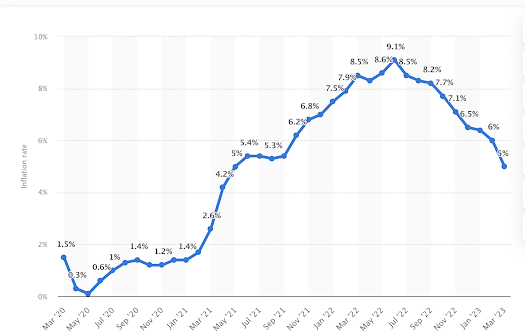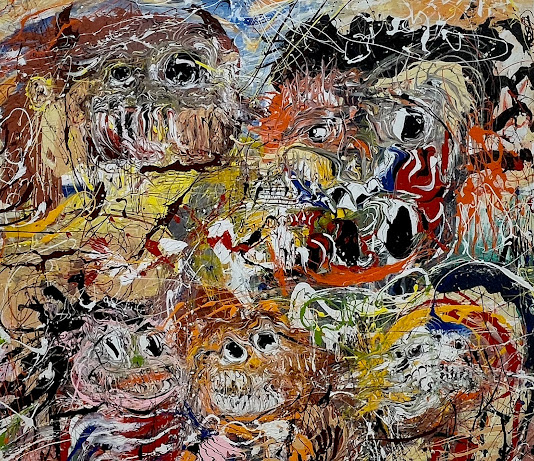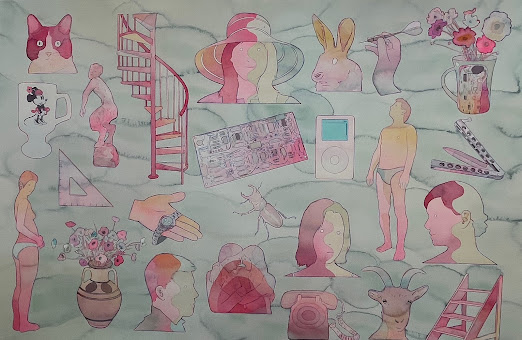(Drivebycuriosity) - I like England. I grew up with the music by Rolling Stones, Kinks, Beatles & Co. and I read a lot English authors from Enid Blyton to Agatha Christie, Evelyn Waugh, Ian McEwan and myriads others. And I love London, which I visited 5 times in several decades.
Naturally I am interested in English history, which shaped Kinks, Waugh & Co. I enjoyed Peter Ackroyd´s "The History of England from Its Earliest Beginnings to the Tudors" ( amazon). The book, the first in a series of 6, is lively written and kept my interest in spite of all the countless facts which filled the about 500 pages.
Just some tidbits:
Early settlers came from north-western Europa, but also from the Atlantic coasts of today´s Spain and south-western France. A part of them settled in a grass area which is today covered by the North Sea. Global warming and melting glaciers flooded the land and forced the settlers to move to today´s island.
The construction of Stonehenge "entailed millions of hours of labor". This needed a huge organized administration long before the Romans and Anglo-Saxons arrived.
Before the Romans invaded, the island was already a trading partner of Rome.
Struggling Kingdoms
Climate changes had a huge influence on lives and agriculture. A drop in temperature of two degrees, as in the period from 500 to 300m BC, curtailed the prospect of adequate harvests noticeably. A difference of one degree made a failure of the harvest seven times more likely. "For ten years, beginning in AD 536, there was a very low level of sunlight; this was a time of dearth and famine."
By the beginning of the ninth century there were in general terms three predominant kingdoms in England; "Wessex, Mercia and Northumbria vied for mastery, while around them struggled the smaller kingdoms of East Anglia, Kent, Sussex and Essex". The early English suffered frequent raids from men of Norway, later also from Denmark, known as Norsemen or Vikings.
Decline & Decay
During the Medieval epoch "the world was in a condition of decline and decay; there was no progress, no evolution and no development".
There was "the slow movement of a descending spiral". There was "suffering and violence and corruption". England was a bloody mess with sheer endless senseless wars & massacres, caused by the greed & ruthlessness of the leading aristocrats and the lawlessness of the general population.
The English kings from 11th to 15th century were basically French, starting with the Normans, who`s descendants ruled the Island through the late 15th century. These monarchs were often born in France, lived there and were buried there. The royals spoke French of course, their only interest in England was squeezing as much money as possible out of the island.
Henry II, crowned 1154, was the son of Geoffrey of Anjou, also known as Geoffrey Plantagenet; "this was because he wore a sprig of yellow broom, or planta genesta, when he was riding". This named a dynasty. All of the Kings of England, from Henry II to Richard III, were Plantagenets until they were supplanted by the Tudors.
A yard (0.9 metres) was defined as "the distance from the king´s nose to the end of his outstretched thumb".
"On the death of a king, law was lost. When the king died, the peace died with him. Only on the accession of a new sovereign did law return. Knights fled back to their castles in fear of losing them".
Vast Quantities Of Pork
Ackroyd does not only cover the sheer endless feuds of kings & dukes, he also describes culture & economy. I learned what people wore and ate and how they dwelled.
The poor ate "a derisory mess of pottage". The richer Anglo-Saxons ate wheaten bread, but bread of rye and barley was more common. They also consumed vast quantities of pork, the pigs grown fat on the inexhaustible supplies of acorns and beech-nuts to be found in the woodsand forests of the country. Venison and poultry were popular among the more wealthy Englishmen. Supplies of fish, among them salmon and herring, were plentiful.
By the thirteenth and fourteenth centuries, the meat had become highly flavored with spices such as aniseed and liquorice. The term "cury" meant the dressing of food.
Spices were not used to disguise the taste of less than healthy meat; they were used for their own sake; and were part of the predilection for stronger flavors. They were also used to color the meats and the other dishes; indigo turned the food blue; and saffron converted it to yellow, blood and burnt toast crusts provided the red and the black.
Sum Of Unintended Consequences
But in spite of all the mayhem England´s culture & economy continuously evolved, except in periods of the plagues, which reduced the population temporarily dramatically.
In the 14th century existed already a network of major roads linking London with the other regions of the country. "The travelers made use of the inns that had been established along the high roads since the time of the Saxons".
Ackroyd concludes: "human history is the sum of total accidents and unintended consequences". "Everything grows out of the soil of contingent circumstance".
I am looking forward to the next volume, which will cover the era of the Tudors.






















































